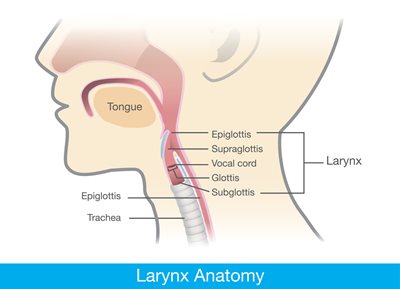When a child or infant has an airway disorder, expert surgical care may be needed to support the child’s ability to breathe or eat. Symptoms of an airway disorder can include stridor (wheezing), turning blue, inhaling (aspirating) food while eating and the use of a tracheostomy tube to support breathing.
The Airway Disorders Program brings together a clinical team experienced in providing care for children with a wide range of airway disorders. The team evaluates each child’s individual condition and develops a care plan tailored to his or her specific needs. Program offerings include a range of surgical procedures that help children breathe to their best ability.
Patients of the program benefit from the comprehensive team of pediatric specialists available on the Nicklaus Children’s Hospital campus to consult in the care of children with complex medical needs.
What is an Airway Disorder?
Airway disorders affect the part of the airway just above the voice box (larynx) to the trachea (windpipe). Disorders can be the result of congenital defects or may stem from injury or a medical procedure.

Who is a Candidate for Evaluation?
- Infants born prematurely with a history of intubation
- Children born with congenital defects or medical conditions that affect the airways (vocal cords and trachea)
- A child who utilizes a tracheostomy tube or ventilator tube to breathe
About Airway Reconstruction
Airway reconstruction procedures are planned by the care team to address each child’s specific airway defect. Procedures involve reconstructing or expanding sections of the airway, as needed. Some procedures are performed endoscopically, with the surgical site accessed through the patient’s mouth. Other procedures are conducted through an incision in the patient’s neck.
Treatments and Procedures
- Cricotracheal Resection (CTR)
- Tracheal Resection
Treatments and Procedures
The Airway Disorders Program offers a full array of endoscopic procedures. These are performed through the mouth without the need for a neck incision required for traditional surgery. Children typically recover and are able to return home more quickly after endoscopic procedures. The program is certified in using a vast array of surgical technologies including lasers or cautery tools.
Some children are not candidates for endoscopic procedures, due to age (too small physically for the procedure to be performed through the mouth), or disease-associated complications. These children may be best served by the traditional surgical procedures. In addition, some children’s needs are best addressed with a definitive open-airway surgical procedure that will reduce the potential for subsequent operations.
The most common airway reconstruction procedures include:
Conditions We Treat
Meet the Doctor
 Brian Ho, MD
Brian Ho, MD
Dr. Ho treats patients with disorders encompassing the entire spectrum of pediatric otolaryngology, from routine health care for children with minor ear, nose and throat (ENT) problems to complicated head and neck, sinuses and airway surgical interventions in the operating room.
Learn more